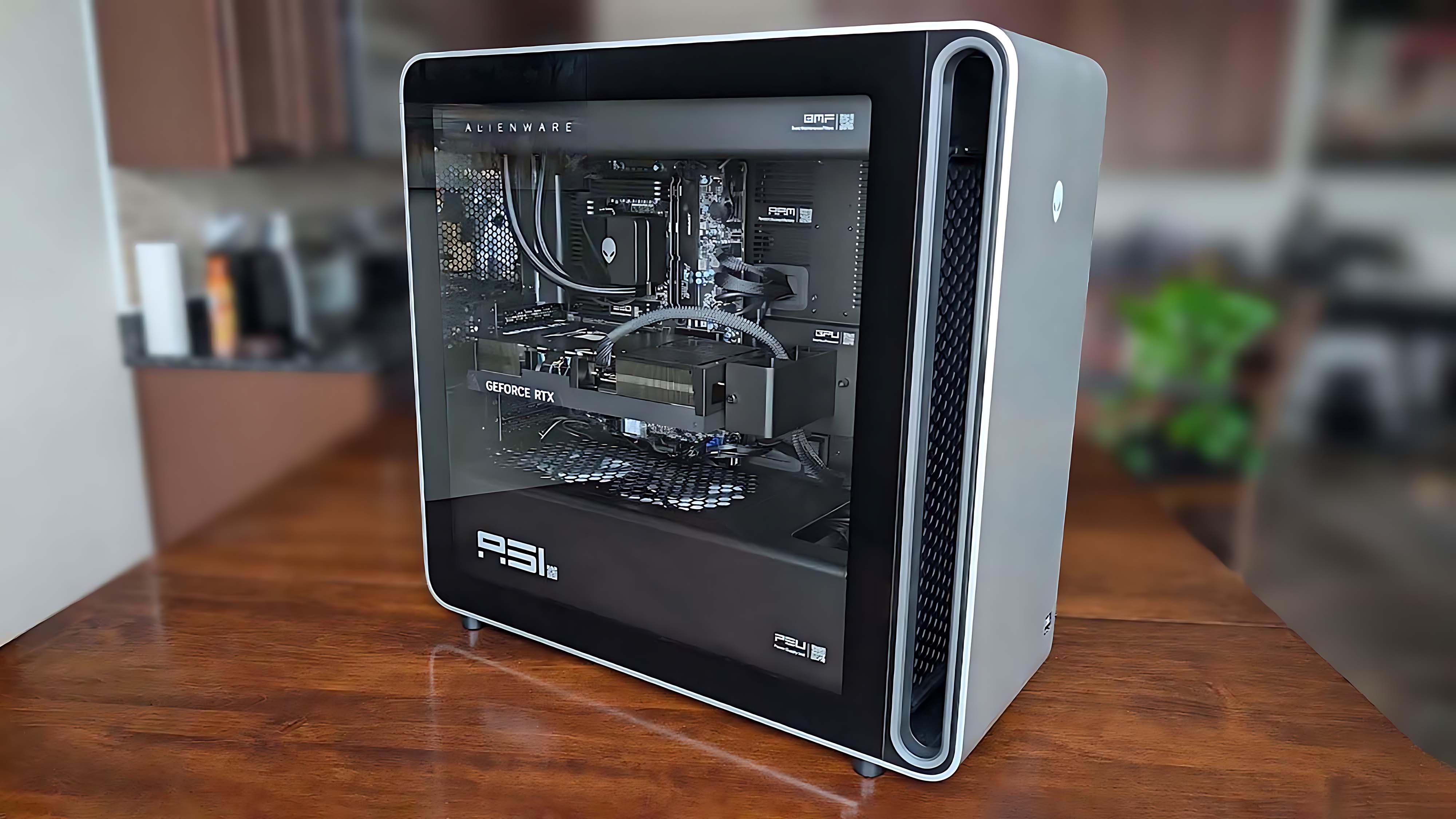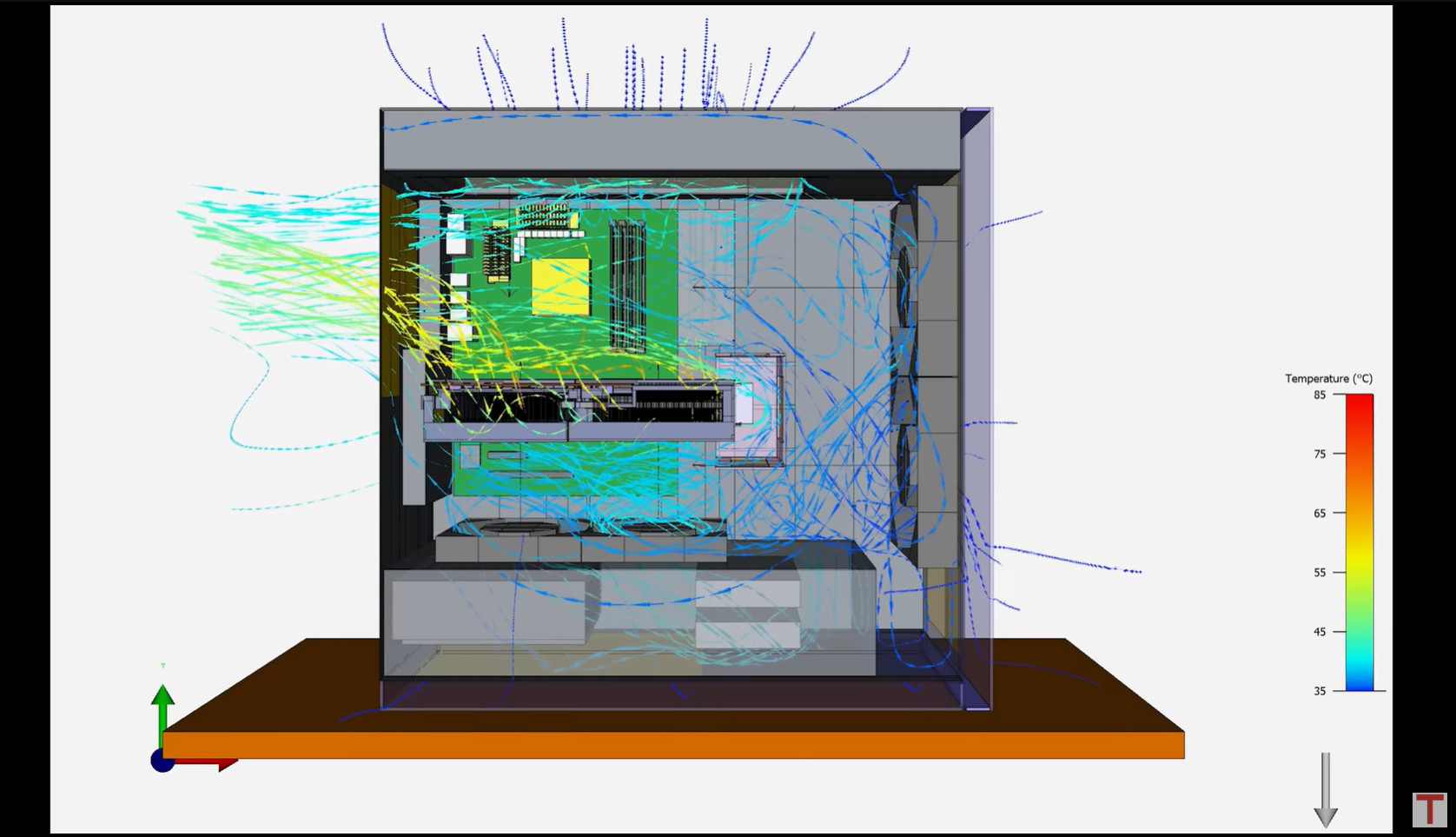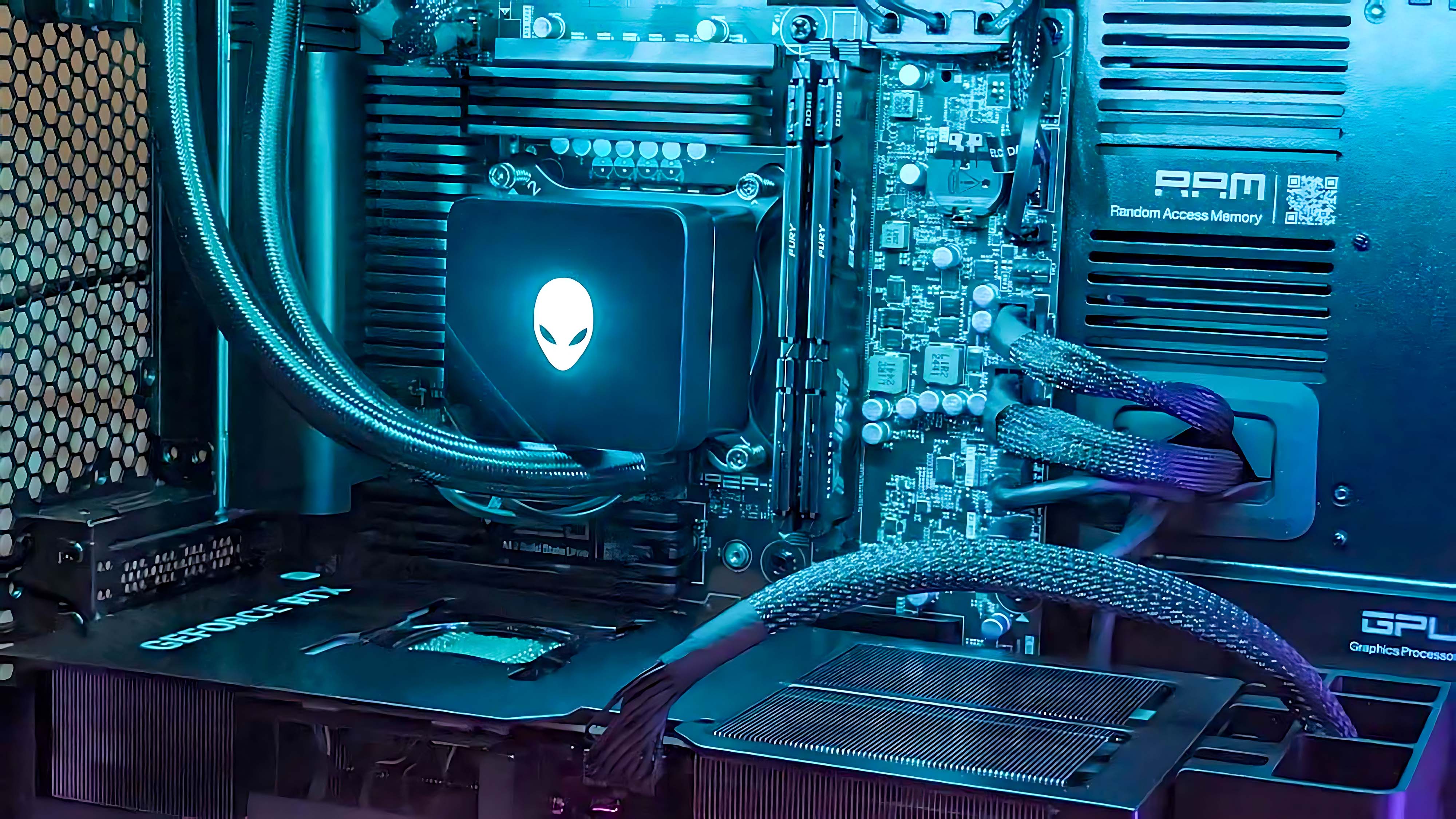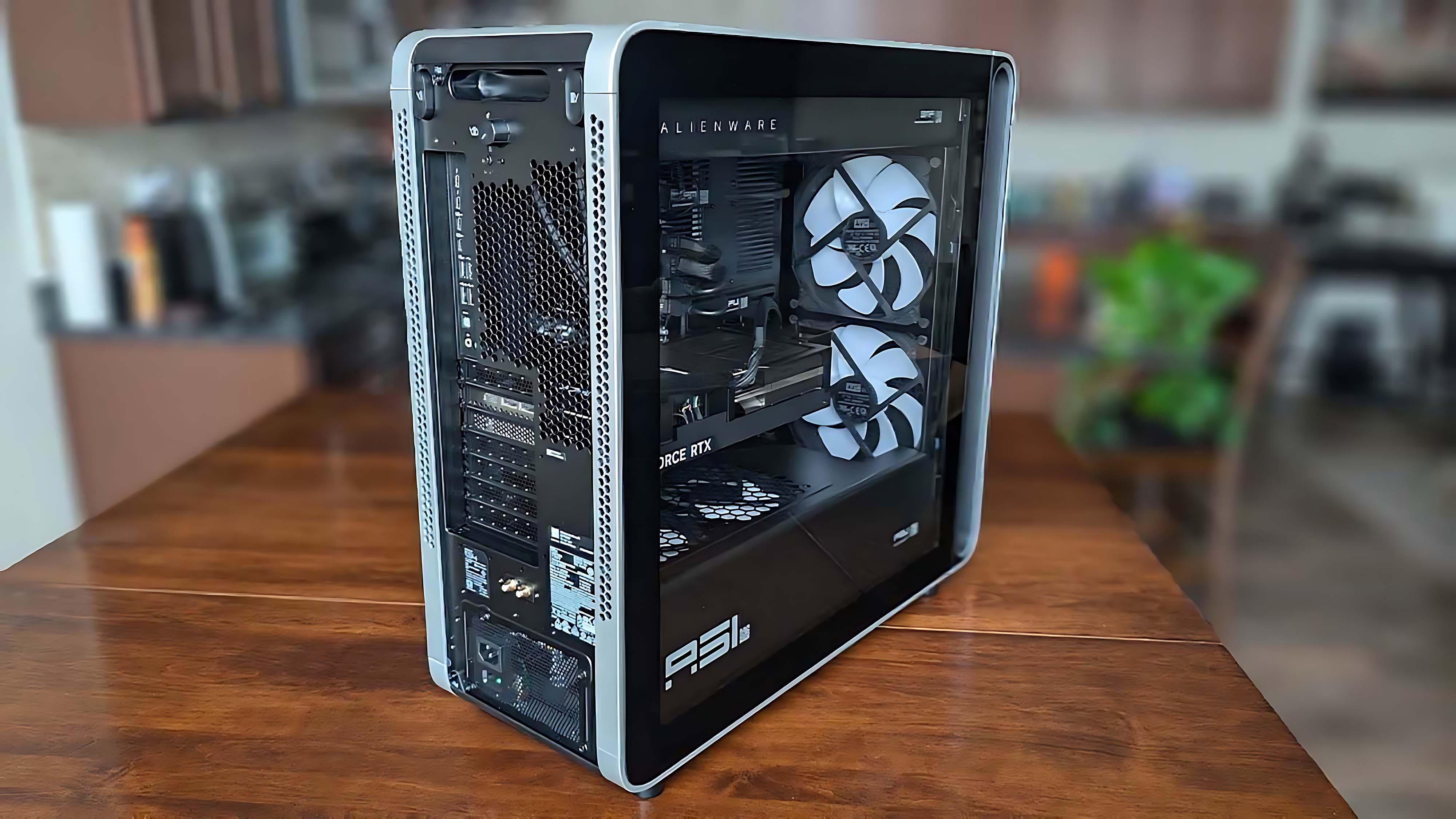
Earlier this year at CES 2025, Dell announced that it was reviving the Area-51 desktop gaming PC. The legendary PC, which debuted more than 25 years ago, went on a brief hiatus but returned with an overhauled design.
Part of that new design was a promise from Dell that the Area-51 was coming back with the potential for easier DIY upgrades, options for cutting-edge performance hardware, and a new cooling method.
Now, thanks to Adam Savage's "Tested" YouTube series, we have an in-depth, behind-the-scenes look at how the Area-51 keeps its cool using a positive pressure design.
Dell's Area-51 cooling and noise claims, as tested, aren't far off
Savage, who many of you probably know as the co-host of the legendary Discovery Channel show "Mythbusters," has been publishing videos on the Tested YouTube channel since about 2010. Topics are all over the place, ranging from medieval suits of armor to PC tech.
Published July 23 is a deep dive into Alienware's method behind cooling in the Area-51 desktop PC. It's no secret that the video is sponsored by Intel and Alienware, but there's so much information and solid proof here that it's far from a fluff piece.
To give you a primer for the video, it's worth mentioning that Alienware designed its new Area-51 PC with a positive pressure design (which has fans push air into the system) rather than a negative pressure design (which has fans pull hot air out of the system), as is far more common in custom PCs.
The [Area-51] stays quiet even when running graphically intensive games. My decibel meter only ever measured a peak of 38.4 dB, which is comparable to light rain.
Rebecca Spear, Windows Central
This leads to a lack of rear exhaust fan — I remarked on this when covering Dell's initial Area-51 announcement, noting that Dell made claims about 25% more airflow with 45% less fan noise.
All the latest news, reviews, and guides for Windows and Xbox diehards.
As it turns out, those claims aren't far off, if at all. Windows Central Editor Rebecca Spear recently reviewed Alienware's Area-51 after spending months with the PC, and in the review, she noted:
"Best of all, the desktop stays quiet even when running graphically intensive games. My decibel meter only ever measured a peak of 38.4 dB, which is comparable to light rain. That's basically just a step above a light whisper."
Despite the quiet cooling, the PC came nowhere close to overheating, and that was with an NVIDIA RTX 5090 GPU inside.
A behind-the-scenes look at Dell's gaming PC testing process
Thanks to Savage's latest Tested video, we now have a much better understanding of how Dell arrived at this design.
Travis North, Dell's Senior Distinguished Thermal Engineering Technologist, might have the coolest job I've ever seen. Savage spends a lot of time with North in the video, going over how Dell tests airflow in its PCs.
In the case of the Area-51, which has two 120mm fans on top, two 180mm fans on the front, and two more on the bottom, over top of the PSU, it all comes down to airflow and pressure. As North states:
"This approach, from the math, the physics, basically minimizes any of the losses, and it gives us the capability to push all the air flow down the channel and actually pre-charge the GPU fan with pressure."
It's revealed that Dell uses the same sensors as the airline industry uses to measure airspeed, but here they're used to test static pressure rather than airflow. As is pointed out in the video, high positive pressure inside a PC case doesn't necessarily mean the PC is being cooled properly.
Three months, 30 simulations, and I can tell you, a ton of work.
Travis North, Dell Senior Distinguished Thermal Engineering Technologist
It's air flow that actually cools a PC, but by measuring pressure inside the case, Dell's technicians can analyze whether or not air is flowing through the right areas.
Savage notes that the back panel of the PC has room for more cutouts than there are in the final product. As North explains, the rear panel sort of acts like a valve; more holes would cause recirculation of hot air.
A lack of cutouts towards the bottom of the rear panel also benefits the GPU's cooling, which is the main focus in the Area-51 — the CPU cooling is already handled with a water-cooled AiO radiator.
When pressed about the overall process to optimize cooling, North remarks, "Three months, 30 simulations, and I can tell you, a ton of work." That is, of course, after the engineers have already come to what seems like a final solution on paper.
Things get more technical thereafter, with North demonstrating how velocity, area, and cubic feet per minute (CFM) pressure are measured using a flow bench.
With the Area-51 connected to one end of the flow bench, where it creates its own pressure using system fans, another fan on the other end of the flow bench is enabled to pull air.
What can we do to ensure that parts are going to live for a long time?
Travis North, Dell Senior Distinguished Thermal Engineering Technologist
Somewhere in the middle is where pressure is measured using "inches of water." One inch of water is equal to 1 PSI (yes, I had to look that up). With an array of digital and analog sensors along the line, it's revealed that the Area-51 is capable of 172 CFM of airflow pressure.
As Savage puts it, "That's huge!" North responds, "The 172 CFM is probably a little bit overkill in this particular case, but it's about longevity. What can we do to ensure that parts are going to live for a long time?"
North explains that it's all about flexibility and longevity. Dell's aim to make the Area-51 more upgradeable than ever has to account for future hardware that may require more cooling.
And because the system can run cooler than it needs to, every little component inside — capacitors, VRMs, etc. — should reasonably have a longer life.
👉 Related: Top 5 desktop PC case features that I can’t live without — and neither should you
These points are reiterated in the second part of the video, in which Savage speaks with a couple of Dell's lead engineers. Tim Graham, Lead Alienware Architect, posits:
"This system is designed for stuff that doesn't even exist yet. For much higher wattage cards. When we first started this one, the 450W card didn't even exist. And we were designing for a 900W [card] and above."
After many years, Dell is finally close to offering a user-friendly pre-built PC
As a longtime custom PC builder, I've traditionally been hard on Dell's previous Alienware desktop designs. From proprietary parts to wacky case designs that seriously get in the way of any tinkering, I wasn't shy about calling out the issues.
👉 Related: Best pre-built gaming PC in 2025
The new Area-51 isn't perfect, but it's a lot closer than ever. Gone are the proprietary motherboard designs — although you'll still need to buy a separate "motherboard adapter bracket" if you want to drop in a non-Alienware board — and form-over-function cases.
The biggest issue now, in my opinion, is pricing. A quick look at Dell's official site shows models starting at $3,049.99. It doesn't take long to throw together a similar build on PCPartPicker, with Core Ultra 7 265 CPU, RTX 5070 GPU, 32GB of RAM, and 1TB SSD, that costs about half that much.
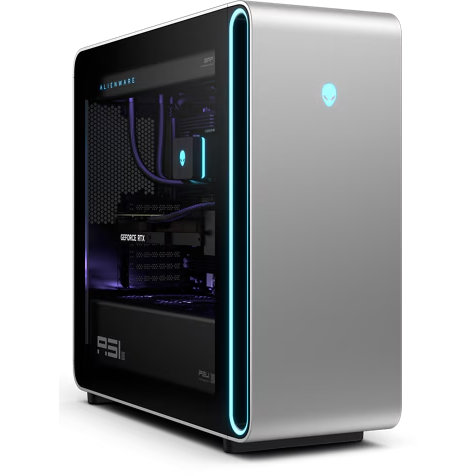
The Alienware Area-51 Desktop is a powerhouse that's perfect for playing the latest and greatest video games. It utilizes standard parts and has latching side panels for easy upgrading. There is also a very healthy range of ports for connecting your various accessories and customizable RGB lighting to get it looking the way you want. You can configure your perfect desktop at Dell or purchase one of the pre-configured options from major retailers.

Cale Hunt brings to Windows Central more than nine years of experience writing about laptops, PCs, accessories, games, and beyond. If it runs Windows or in some way complements the hardware, there’s a good chance he knows about it, has written about it, or is already busy testing it.
You must confirm your public display name before commenting
Please logout and then login again, you will then be prompted to enter your display name.

